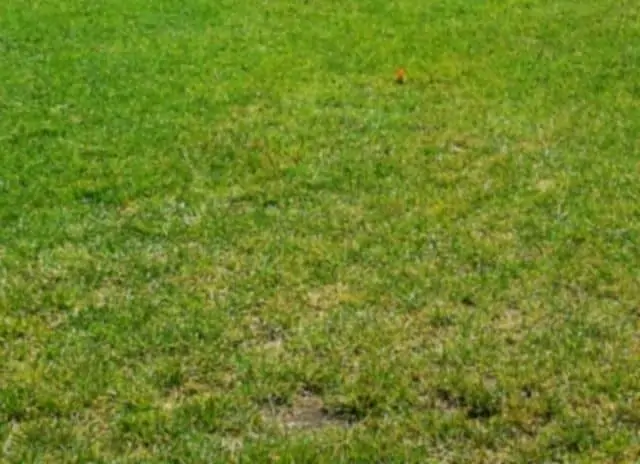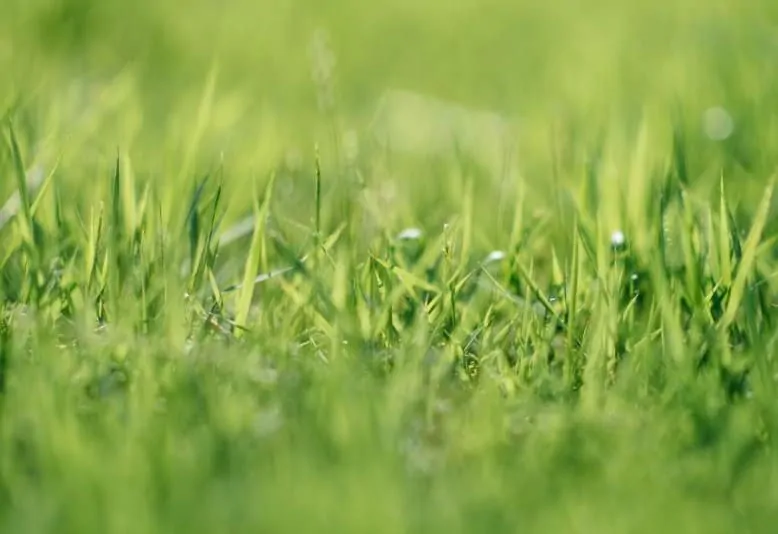Can Grass Grow in Sand?- Yes, IT can Grow in Sand if there is an abundance of moisture. Water is essential for the root system of any plant and grass is not an exception. It will require some water and nutrition t thrive in all kinds of trains. Coarse sand is not very good for water and nutrient retention. So it is not that good for growing any plant. Although the agility of grass to survive anywhere helps them to adapt to this worse situation. They are genetically prepared for such drought-like conditions. Many grass varieties have small root nodes and rhizomes present that help them survive the worst drought-like conditions.
These root nodes store sufficient moisture to sprout back each time the foliage dies back to the ground. You may have seen grass growing on the beach sand or old sand deposits. The grass is probably the first plant of its kind to quickly adapt in coarse sandy soil.

Difference Between Regular Grapes and seedless Grapes
Is Sand Good for Growing Grass?
No, Definitely not. The sand itself is no good for any plant. Sand is poor with moisture retention. It is the moisture and nutrients that keep the plant alive. Some plants need these resources more than others. While Grass has some advantage over this situation. It can survive in the sand with its long fibrous root system. Grassroots can draw water from deep below the surface hence saving them from dehydration. Therefore it is good to grow some grass varieties in sand Although it will need sufficient water to survive.
Can You Lay grass Seeds on Sand?
Yes, you could do so but the chance of their survival in such harsh conditions depends on the availability of water. Pure sand cannot hold water and nutrient to support plant growth. The coarse granular structure is responsible for the quick draining of water.
The sun will also pose an extra threat in the lack of moisture. The sand will become burning hot and eventually taste the grass seed in the absence of moisture. Although in real cases what we sand in gardening terms is the coarse sandy soil. It contains soil with some nutrients and moisture. So you can sow the grass seeds in sandy soil and yes, don’t forget to water regularly.
You may need to sow the same sandy soil patch a couple of times before it gets a thorough grass cover. After all, sand is not meant for gardening. It is only good for maintaining good drainage in the soil. Too much sand can lead to frequent watering as the soil will drain out too quickly.
Check out: Lawn grass problems: Discolored leaf Blades- (With Solution)
What Type of Grass can Grow in Sand?
There are more than 200 different plants are listed in the grass family. Most o them are botanically classified while others are there just for the gardener’s sake. Out of all, only a few grass varieties can truly sustain desert sand. Some other grass varieties can survive in the sand with an abundance of moisture like a beach or river basin. Almost every grass can survive and grow well in sandy soil. Though It may require some extra nutrition and water in such situations.
Grass varieties with deep dense fibrous root systems can easily survive in the sand. Some varieties have adapted to this situation by developing root nodes and rhizomes. These root nodes and rhizomes can sprout back in favorable conditions hence keeping the heredity of the plant alive for years.
Grass usually have a strong root system that supports its growth even in low water level. It can draw water from at most 15 feet deep below the surface. That’s why the grass is so helpful in rising underground water levels in desert areas. It may take years but eventually, roots will reach deep down the water level.
Wait… Does it mean you can have a lawn in the sand? Maybe after a few years of practice but not completely. If you frequently mow the grass as done in a lawn then it will not develop a deep root system. It will not survive without a deep root system.
What makes Grass comfortable to Grow in Sand?
The strong root system of the grass helps it grow comfortably in the sand. Most grass varieties have a dense and complex fibrous root system. When you sow the grass seed in moist sand, it starts germinating within a few weeks. The moisture is sufficient for the seeds to germinate in the warm sand. The sand itself doesn’t have sufficient nutrients to feed the plant. So the grass will stretch its root deep down in search of water and nutrients.
The ability to develop roots faster than several other plants helps the grass to sustain in the sand in quiet ease.
Read this: Can Grass Survive Snow? Winter Lawn Care
Common problems with Sandy Soil
- Sandy Soil Drains too Quickly. Water can flow easily through sandy soil. this can be an advantage as well as a disadvantage.
- It has low water retention. Sandy soil can not absorb much water so you may have to water frequently.
- Sandy soil can not hold soluble nutrients intact for the root system. It may wash off quickly with the flowing water.

How Grass handle problems with sand soil
- Add Compost and regular garden soil in the sand to even its texture.
- Water regularly to hydrate the grassroots.
- Add extra nutrients or fertilizers to deal with the loss due to flowing water.
- Choose grass varieties according to the soil conditions. Some grass does well in sandy than others.
- Avoid frequent mowing in lawns with sandy soil. Let the grass dig deep its roots. These roots will keep it healthy and alive from now on.
Type of Grass Ideal for Sandy Soil
- Fescue Grass can grow well in well-draining sandy soil. It can do well in a minimum of 4 hours of direct sunlight. It is relatively cool-season grass so it may require regular watering.
- Bentgrass is a popular choice for sandy soil. It requires slightly acidic to neutral soil with ph 5 to 6.8. This grass needs full sun in cool moderate weather.
- Zoysia grass is a good alternative for the warm season. It is a perennial grass that does pretty well in sandy soil. Slightly acidic to neutral soil is good for this grass i.e., ph 6.0 to 6.8.
- Bermuda grass is another good alternative for sandy soil. It is a relatively fast-growing grass. 4 to 6 hours of sunlight is sufficient for this grass. Although it may require proper feeding and regular watering for a lustrous green look. It does well in soil with ph 6.0 to 7.0.
- Seville st. Augustine grass is probably the best on this list. It can grow in almost any soil type with a huge ph variation of 3.5 to 6.8. It needs 6 to 8 hours f daily sunlight with abundant watering, especially in sandy soil.
Final Words
What do you think-Can Grass grow in Sand?- Yes They Do, Every grass type can grow easily in sandy soil. Although few of them do better than others in sandy soil. The regulation of water and nutrients is very essential to grow grass in sandy soil. This soil can drain quickly leading to loss of water and nutrients. Water and fertilize the soil regularly to cope with such situations. The abundance of water will determine whether the grass will grow or not in your garden.

